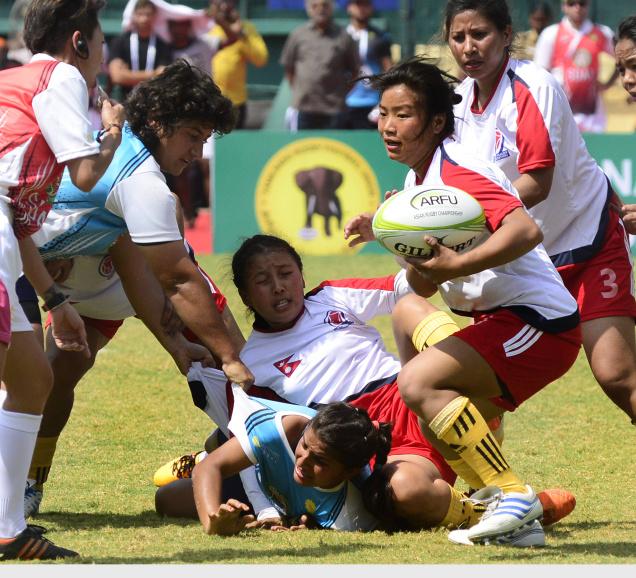Mumbai, MAHARASHTRA :
Rugby in the country, and in Asia, has a lot of picking up to do, writes TANAY APTE
In our cricket-crazy country, it would be safe to assume that all other sports fall under the minority category. In their fight for more recognition, football, hockey, badminton and even kabaddi now have glitzy, cash-rich leagues — modelled, ironically, on the IPL. These have gone some way in increasing the sports’ fan following, but are nowhere close to dislodging cricket off its pedestal.
And then, we have rugby. The first rugby match was played on Indian soil nearly 150 years ago, in 1872, in Kolkata — a team of Englishmen took on another with Scottish, Welsh and Irish players. Almost a century later, the Indian Rugby Football Union (IRFU) was founded in 1968. But, it received recognition from the International Rugby Board only in 1999.
The sport is a huge hit among Western European countries, Oceanic countries and, of course, in South Africa. To increase its popularity in Asia, the governing body, Asia Rugby, introduced the Asian Seven Series in 2009. Although it has not set the world alight by any means, the quality of rugby has definitely improved.
After the success of last year’s Asian Rugby Sevens Olympic Pre-Qualifiers in Chennai, the city was given a chance to host the Asian Rugby Development Sevens Series as part of the Asia Rugby Sevens calendar. The tournament took place at the Jawaharlal Nehru stadium on February 20 and 21.
Nasser Hussain, the General Manager of Rugby India, had said, “Riding on the success of last year’s edition, the top teams in Asia are well prepared to raise the bar of the competition. We will witness some of the best Rugby in Asia, during the course of the tournament.” He was not wrong.
Hosts India competed against the likes of South Korea, the Philippines, Thailand, Indonesia, Kazakhstan, Saudi Arabia, Syria, Guam, Bangladesh, Nepal, the UAE, Lebanon, and Chinese Taipei, which eventually emerged victorious in the men’s section, beating Thailand 36-21 in the final, with a powerful display. The women’s final was a cracking affair, in which South Korea defeated Guam 24-19, via a golden try after the game ended in a tie at the full-time whistle.
The Indian women’s team won the bronze medal match against Nepal in a lopsided encounter, in which the score read 39-0. The men’s team ended up with a sixth-place finish.
In a country of more than a billion, you would expect some semblance of a crowd at an international sporting event. But, although their numbers were scarce, the locals turned up the volume throughout the tournament. With drum beats, whistles and loud cheers, the atmosphere at the stadium egged on the players to give it their all.
Rugby is still not a professional sport in India (though there are roughly 50,000 men and women playing it), and the sport finds it hard to attract the investment needed to take it to the next level.
Asia Rugby’s tournament consultant, Aaron Stockdale, however, believes there is light at the end of the tunnel. “Over the past decade, India has consistently been developing as a serious contender in the Asian rugby circuit. With an event of this stature being held here, it is only a matter of time before the youth of this nation help build a formidable line-up that will compete amongst the best.”
The 2019 Rugby World Cup is scheduled to take place in Japan — the first time an Asian country will host the event. Japan’s stunning win over South Africa in the World Cup last year sent shockwaves throughout the sport. It put Asia on the rugby map and, more importantly, gave hope to the Asian rugby nations that they can mix it up with the big boys and not feel out of place.
However, that date might be a bit too soon for India, as the sport is still in its infancy. But, with careful nurturing, we can one day see ourselves staring at TV sets as the national team goes toe to toe with rugby’s finest.
source: http://www.thehindu.com / The Hindu / Home> Features> MetroPlus / by Tanay Apte / February 22nd, 2016









